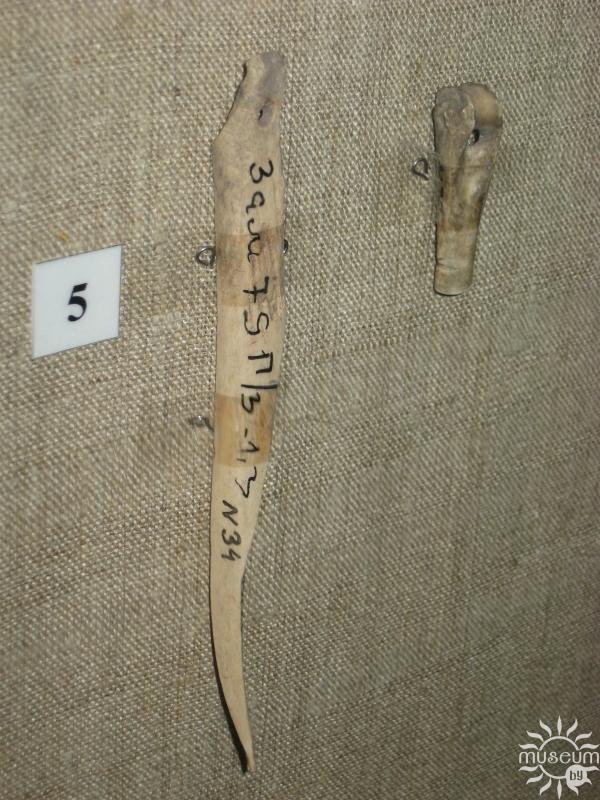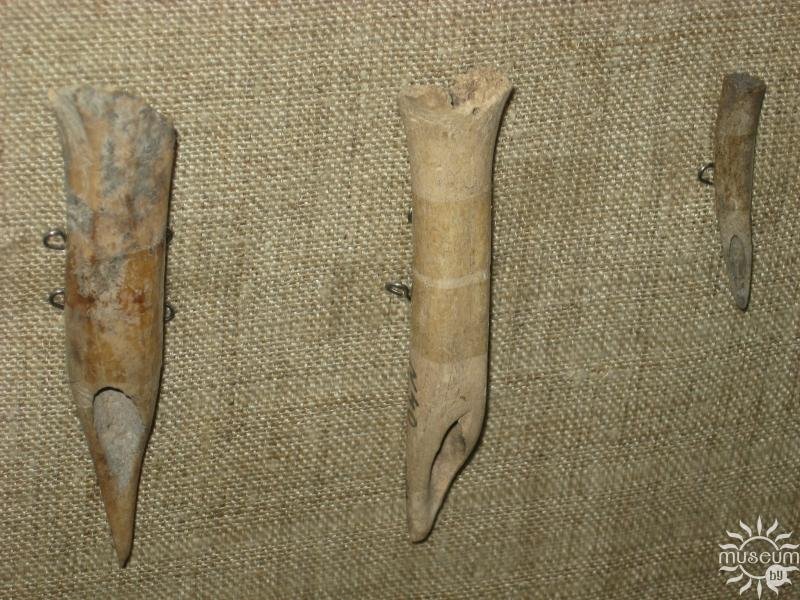In the era of the Iron Age (7th century BC - 5th century AD) rivers still remained an important source of food for man. One of the most popular fishing gear was the fishing nets used at that time, for weaving which special needles and rods were used. Tubular bones, as well as split or whole ribs of animals, were used to make them. In order to give the product the necessary shape, the bone had to be scraped with stone scrapings, planed, and also ground and cleaned. Such devices for weaving networks are presented in the exposition of the Museum of Local Lore. The category of "needles" includes two items. One is a bone product with a pointed end that resembles a pin; in its wide part a round hole is drilled. Another product is partially preserved. It also has a round hole, its head resembles a natural bone shape. Kochedyks are represented by three samples, unfortunately, not very well preserved. The working part of the roach has as a rule a wedge-shaped edge with traces of processing. Kochediki allowed one of the loops of the already woven network to be lifted in order to push the free end of the material into it. The ancient fisherman was able to tie the fishing net with such bone tools. These objects were found by the archaeologist Vadim Iosifovich Shadyro on the territory of Dvina and in 1979 were transferred to the Museum of Local Lore.


